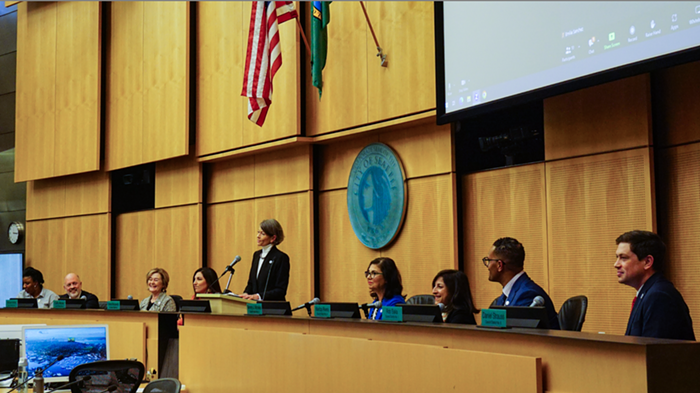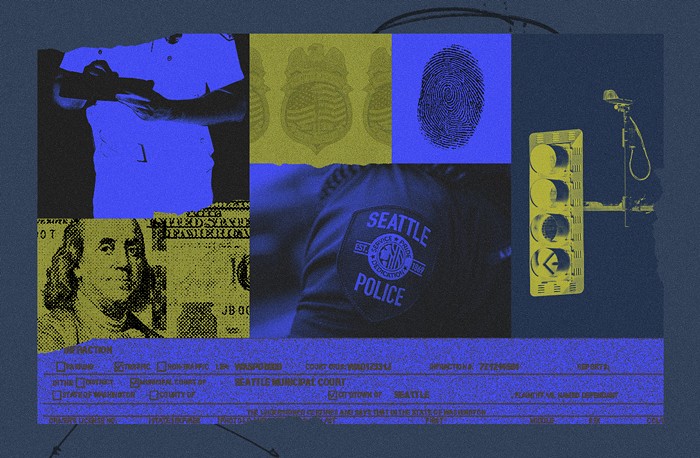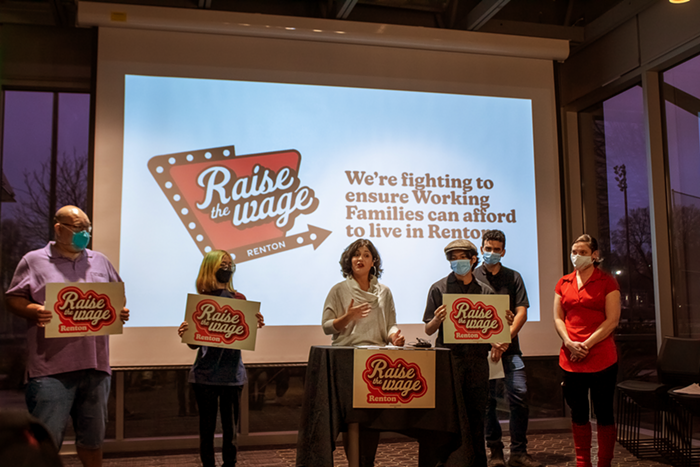The EIS, commissioned by the Elevated Transportation Company (ETC), the group responsible for getting the monorail plan together by November, studies the effects that monorail construction and operation will have on the surrounding neighborhoods. Though it's only a draft, the EIS extensively covers the proposed 14-mile monorail route from Ballard to downtown to West Seattle--the "Green Line," as it's now called. It also covers a citywide monorail plan, but in less detail. How will monorail columns impact marine wildlife in the Ship Canal in Ballard, for example, or what views or historic buildings may be affected? But what's interesting, and ultimately symbolic of the EIS, is how few bombshells there are. Monorail appears to benefit the community and the environment, something proponents have argued for years.
Many of the conclusions in the EIS are obvious. Monorail is elevated and avoids many of the problems that "at grade" projects, like Sound Transit's light-rail technology, encounter. It doesn't have to tunnel underground (which is both expensive and technically problematic), far fewer homes and businesses will be displaced, (the monorail can go around and above, instead of through locations), and less land will have to be purchased. Also, monorail runs on electricity, emitting no fossil fuels. "It will help remove our dependence on foreign oil," jokes ETC staffer Joel Horn.
The EIS does identify a few areas of "significant impact," but even those are minimal, really. For example, in some neighborhoods, noise from a monorail running along the Green Line at 50 mph is thought to be a "potential significant unavoidable adverse impact." It generates 70 decibels, which is loud enough to interrupt conversation. On Second Avenue in Belltown, a major hub along the Green Line route, there will be "severe [noise] impacts within about 20 feet" of the line, says the EIS. But this "problem" is actually a good thing. As the EIS points out, and what an April 5 Seattle Times story about the EIS predictably failed to mention, 70 decibels is about 20 decibels quieter than a Metro bus! If Belltown residents can handle buses (and apparently they can, because their 2000 neighborhood plan advocates more of them), they can certainly handle the monorail. "At top speed, it only takes two seconds for the monorail to go by. Noise is not an issue," adds Peter Sherwin, author of I-53.
Another "major impact" of the monorail, which is covered extensively in the EIS with street-corner snapshots and computer animations, will be its effect on views. Duh. The monorail is 20 feet up in the air: People will probably lose views. (But they'll also gain views from riding the monorail.) If you want more views, move to Montana.
The ETC also released a condensed draft of the Green Line route and cost estimates. On a Thursday evening last week, the 36th floor of the downtown Bank of America Tower was packed with French men in suits studying Seattle's potential Green Line monorail route. The men, representatives of the transportation company Bombardier, a French Canadian firm that hopes to win the monorail contract, were poring over the costs involved, and making recommendations to lower those costs. The Green Line won't be cheap.
The ETC estimates the Green Line will cost between $970 million and $1.7 billion to build, and $18-$25 million a year to run. Not a small chunk of change. (New taxes are expected to cover most of the building costs.) However, the ETC also projects that with the help of monorail fares (probably about $1.50 a ride), station and train advertising, and higher fares during events like a Mariners game, the costs to run and maintain the Green Line could be paid for. In fact, the Green Line, like the existing Seattle monorail, could be profitable. This would definitely be an anomaly. "There aren't any major transit systems in this country that operate without a subsidy," says Tony Kouneski, vice president of member services for the American Public Transportation Association. "The generally low fares are not enough to cover the costs." (75 percent of Metro bus operating costs are funded by taxpayer subsidy.) Like all big projects, the cost variables are extreme.
For example, under "lower projections" of the ETC draft, if the Green Line costs $25 million a year to run, and revenues are only $19 million a year, we lose money. But under "high projections," if the Green Line costs $20 million a year to run, and revenues are $37 million, we make money. Big differences. Those huge variables are all dependent on what decisions the ETC recommends in the final November plan. How much will be spent on stations and fancy design? Should the ETC sell a minimal amount of train and station advertising space, bringing in $100,000 a year, or should there be intense "Times Square-style" advertising, raking in over $500,000 a year? And another interesting money variable: hours of monorail operation.
Should the Green Line run till midnight, 2:00 a.m., or 24 hours a day? In the draft, the ETC recommends shutting down the monorail at midnight. Bad move. Look at Capitol Hill, Downtown, and Ballard at 2:00 in the morning. There are crowds of people leaving bars, restaurants, and clubs. And how many of those people are getting in cars drunk? If the monorail shuts down so early, it will lose revenue and avoid an important public service. Do buses stop running at midnight?
These and a million other questions and variables are being debated right now. You can have a say. That's the whole point of the EIS and the draft plan. This is your monorail: You'll be paying for it. How do you want it?
The draft monorail plan and EIS can be seen at www.elevated.org and public libraries. E-mail info@elevated.org or call 262-8184.


















